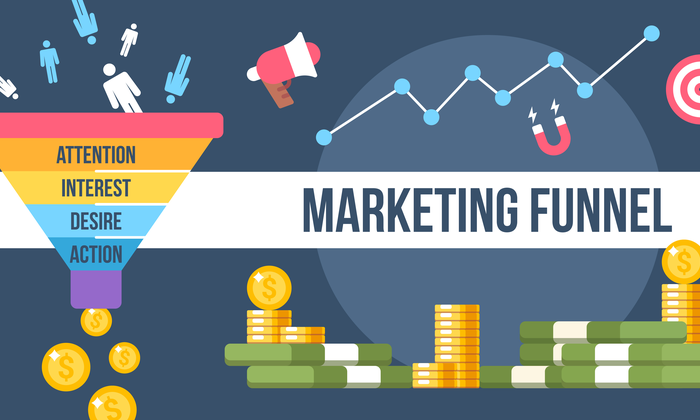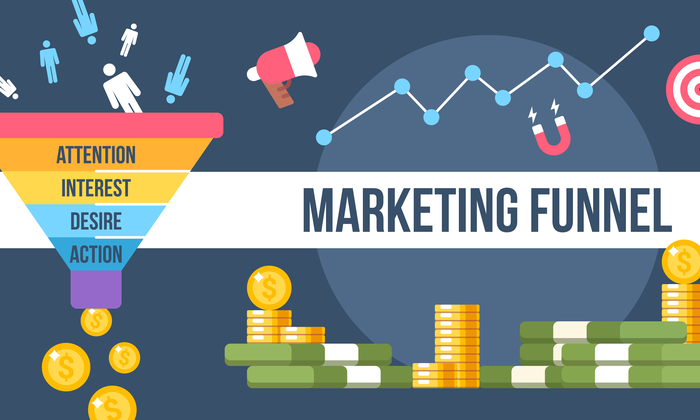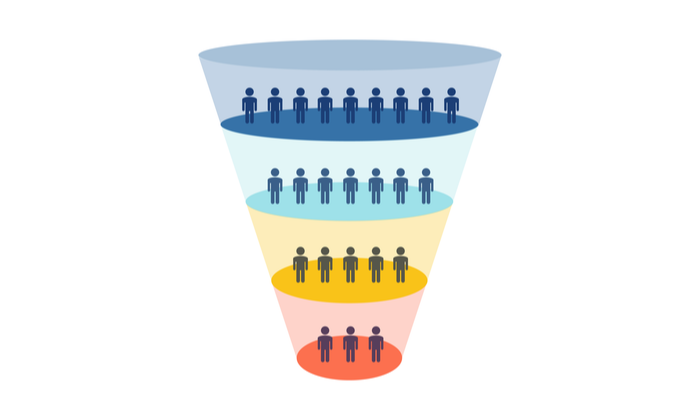Marketing Funnel: What They Are, Why They Matter, and How to Create One

By Neil Patel
If you’ve spent any time learning about marketing analytics, you’ve probably come across the term “funnels.” What exactly are marketing funnels and why do they matter?
Marketing funnels are a useful tool to help you visualize the path customers take from first finding out about your brand to converting. Understanding them provides useful insight into why some customers convert — and some don’t.
What Are Marketing Funnels?
A marketing funnel is a visual representation of the steps a visitor takes from first finding out about your brand until they convert. The most common type of marketing funnel is four steps:
- Attention: A prospective customer sees your ad, social media post, or hear about you from a friend.
- Interest: They think you can solve a problem and wants to learn more.
- Desire: The prospect has done their research and wants to convert.
- Action: The prospect takes action — they buy your item, schedule a demo, or take whatever other action you want them to take.
The action can vary based on customer and industry — maybe you want them to make a purchase, sign up, or fill out a form. When someone does something you want them to do, it’s known as a conversion. The visitor converts from browsing to taking the action you want them to take.
Think about the Amazon purchase funnel. There are several steps a visitor has to go through before they can purchase a product. Here’s how it looks:
- They visit Amazon.com
- They view a product
- They decide to add a product to the cart
- They complete the purchase
There are additional steps/actions that can be taken in between each of these steps, but they don’t matter in the marketing funnel unless they contribute to the final action. For example, a visitor may view Amazon’s Careers page, but we don’t need to count these in the funnel because they aren’t necessary steps.
Why is the set of steps to conversion called a “funnel”? Because at the beginning of the process, there are a lot of people who take the first step.
As the people continue along and take the next steps, some of them drop out, and the size of the crowd thins or narrows. (Even further along in the process, your sales team gets involved to help close the deal.)
Losing customers might sound like a bad thing — but it’s not. The truth is, not everyone in your funnel will convert. The top of the funnel is where everyone goes in (visiting your site or viewing a marketing campaign). Only the most interested buyers will move further down your funnel.
So when you hear people say “widen the funnel,” you now know what they are referring to.
They want to cast a larger net by advertising to new audiences, increasing their brand awareness, or adding inbound marketing to drive more people to their site, thus widening their funnel. The more people there are in a funnel, the wider it is.
What Are the Different Types of Funnels?
In …read more
Source:: Kiss Metrics Blog










